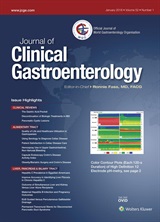
“Neuroinflammation is observed as a routine characterization of neurodegenerative disorders such as dementia, multiple sclerosis (MS) and Alzheimer’s diseases (AD). Scientific evidence propounds both of the neuromodulatory and immunomodulatory effects of CB2 in the immune system. β-Caryophyllene (BCP) is a dietary selective CB2 agonist, which deserves the anti-inflammatory and antioxidant effects at both low and high doses through activation of the CB2 receptor.
METHODS:
In this study, we investigated the protective effects of a broad range concentration of BCP against LPS-induced primary microglia cells inflammation and M1/M2 imbalance and identifying the portion of the involvement of related signaling pathways on BCP effects using pharmacological antagonists of CB2, PPAR-γ, and sphingomyelinase (SMase).
KEY FINDINGS:
The protective effects of BCP on LPS-induced microglia imbalance is provided by the M2 healing phenotype of microglia, releasing the anti-inflammatory (IL-10, Arg-1, and urea) and anti-oxidant (GSH) parameters and reducing the inflammatory (IL-1β, TNF-α, PGE2, iNOS and NO) and oxidative (ROS) biomarkers. Moreover, we showed that BCP exerts its effects through CB2receptors which overproduction of ceramides by SMase at middle to higher concentrations of BCP reduce the protective activity of BCP and results in the activation of the PPAR-γ pathway.
SIGNIFICANCE:
In conclusion, the low concentration of BCP has higher selective anti-inflammatory effects rather than high levels. On this occasion, BCP by modulating the microglia is able to have potential therapeutic effects in neuro-inflammation conditions and microglia cells such as MS and AD.”
https://www.ncbi.nlm.nih.gov/pubmed/30620895
https://www.sciencedirect.com/science/article/abs/pii/S0024320518308610?via%3Dihub
“β-caryophyllene (BCP) is a common constitute of the essential oils of numerous spice, food plants and major component in Cannabis.” http://www.ncbi.nlm.nih.gov/pubmed/23138934
 “The present review will provide an overview of the neurobiology, epidemiology, clinical impact, and treatment of cannabis use disorder (CUD) in mood disorders.
“The present review will provide an overview of the neurobiology, epidemiology, clinical impact, and treatment of cannabis use disorder (CUD) in mood disorders.
 “Complementary therapies for inflammatory bowel disease (IBD) have earned growing interest from patients and investigators alike, with a dynamic landscape of research in this area. In this article, we review results of the most recent studies evaluating the role of cannabis and turmeric for the treatment of IBD and other intestinal illnesses.
“Complementary therapies for inflammatory bowel disease (IBD) have earned growing interest from patients and investigators alike, with a dynamic landscape of research in this area. In this article, we review results of the most recent studies evaluating the role of cannabis and turmeric for the treatment of IBD and other intestinal illnesses.



 “The endogenous
“The endogenous 

